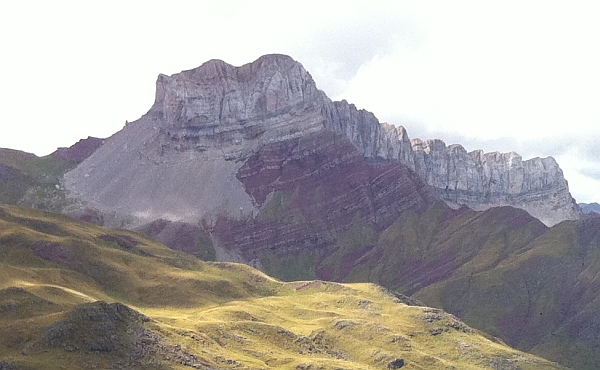Have you seen a syncline in 3D? Here is a picture I took couple of months ago in the Spanish Pyrenees. It was an exhausting hike. About 20 km horizontally and 1 km vertically but I really enjoyed it.
An explanation for those of you who do not feel very comfortable in the company of awkward speaking geologists: A syncline is a U-shaped fold. It is a common rock formation in mountainous areas. This particular syncline is interesting because one can see it from different directions. In most cases only two dimensions are visible.
This syncline is largely made of conglomerate I wrote about in this post: Conglomerate – rock of rocks.

Castillo D’Acher – a syncline in the Spanish Pyrenees.
Wow! What an amazing exposure–please tell us more about it. Is that an unconformity between the red rocks and the grey rocks? How old are they?
It is named Castillo D’Acher. This gray is limestone and red conglomerate. These rocks are old. I can’t say for sure but they could be from the Permian. Anyway, they are way older than the Pyrenees range itself which is a relatively recent phenomenon. This region has many beautiful unconformities (including overturned strata) but I am not sure about the boundary between the red and the gray rocks. It is worth to take a look at Google Maps: http://maps.google.com/maps?saddr=Valle+de+Hecho,+Spain&daddr=42.822917,-0.674078&hl=en&sll=42.823704,-0.668921&sspn=0.0243,0.055747&geocode=Ca1cY1qH1mDTFSgnjAIdHI30_ylJN4kY1m9XDTFGwkpy8tfO3g%3B&vpsrc=0&mra=mift&mrsp=1&sz=15&t=h&z=15